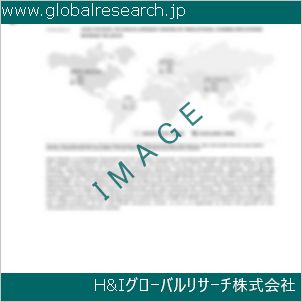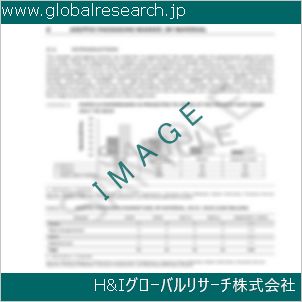Table of Contents
1 Industry Overview of Leadacetate
1.1 Definition and Specifications of Leadacetate
1.1.1 Definition of Leadacetate
1.1.2 Specifications of Leadacetate
1.2 Classification of Leadacetate
1.3 Applications of Leadacetate
1.3.1 Nuclear Application
1.3.2 Non-Nuclear Application
1.4 Industry Chain Structure of Leadacetate
1.5 Industry Overview and Major Regions Status of Leadacetate
1.5.1 Industry Overview of Leadacetate
1.5.2 Global Major Regions Status of Leadacetate
1.6 Industry Policy Analysis of Leadacetate
1.7 Industry News Analysis of Leadacetate
2 Manufacturing Cost Structure Analysis of Leadacetate
2.1 Raw Material Suppliers and Price Analysis of Leadacetate
2.2 Equipment Suppliers and Price Analysis of Leadacetate
2.3 Labor Cost Analysis of Leadacetate
2.4 Other Costs Analysis of Leadacetate
2.5 Manufacturing Cost Structure Analysis of Leadacetate
2.6 Manufacturing Process Analysis of Leadacetate
3 Technical Data and Manufacturing Plants Analysis of Leadacetate
3.1 Capacity and Commercial Production Date of Global Leadacetate Major Manufacturers in 2023
3.2 Manufacturing Plants Distribution of Global Leadacetate Major Manufacturers in 2023
3.3 R&D Status and Technology Source of Global Leadacetate Major Manufacturers in 2023
3.4 Raw Materials Sources Analysis of Global Leadacetate Major Manufacturers in 2023
4 Capacity, Production and Revenue Analysis of Leadacetate by Regions, Types and Manufacturers
4.1 Global Capacity, Production and Revenue of Leadacetate by Regions 2019-2024
4.2 Global and Major Regions Capacity, Production, Revenue and Growth Rate of Leadacetate 2019-2024
4.3 Global Capacity, Production and Revenue of Leadacetate by Types 2019-2024
4.4 Global Capacity, Production and Revenue of Leadacetate by Manufacturers 2019-2024
5 Price, Cost, Gross and Gross Margin Analysis of Leadacetate by Regions, Types and Manufacturers
5.1 Price, Cost, Gross and Gross Margin Analysis of Leadacetate by Regions 2019-2024
5.2 Price, Cost, Gross and Gross Margin Analysis of Leadacetate by Types 2019-2024
5.3 Price, Cost, Gross and Gross Margin Analysis of Leadacetate by Manufacturers 2019-2024
6 Consumption Volume, Consumption Value and Sale Price Analysis of Leadacetate by Regions, Types and Applications
6.1 Global Consumption Volume and Consumption Value of Leadacetate by Regions 2019-2024
6.2 Global and Major Regions Consumption Volume, Consumption Value and Growth Rate of Leadacetate 2019-2024
6.3 Global Consumption Volume and Consumption Value of Leadacetate by Types 2019-2024
6.4 Global Consumption Volume and Consumption Value of Leadacetate by Applications 2019-2024
6.5 Sale Price of Leadacetate by Regions 2019-2024
6.6 Sale Price of Leadacetate by Types 2019-2024
6.7 Sale Price of Leadacetate by Applications 2019-2024
6.8 Market Share Analysis of Leadacetate by Different Sale Price Levels
7 Supply, Import, Export and Consumption Analysis of Leadacetate
7.1 Supply, Consumption and Gap of Leadacetate 2019-2024
7.2 Global Capacity, Production, Price, Cost, Revenue, Supply, Import, Export and Consumption of Leadacetate 2019-2024
7.3 USA Capacity, Production, Price, Cost, Revenue, Supply, Import, Export and Consumption of Leadacetate 2019-2024
7.4 EU Capacity, Production, Price, Cost, Revenue, Supply, Import, Export and Consumption of Leadacetate 2019-2024
7.5 China Capacity, Production, Price, Cost, Revenue, Supply, Import, Export and Consumption of Leadacetate 2019-2024
7.6 Japan Capacity, Production, Price, Cost, Revenue, Supply, Import, Export and Consumption of Leadacetate 2019-2024
8 Major Manufacturers Analysis of Leadacetate
8.1 Manufacturer One
8.1.1 Company Profile
8.1.2 Product Picture and Specifications
8.1.2.1 Type I
8.1.2.2 Type II
8.1.2.3 Type III
8.1.3 Capacity, Production, Price, Cost, Gross and Revenue
8.1.4 Contact Information
8.2 Manufacturer Two
8.2.1 Company Profile
8.2.2 Product Picture and Specifications
8.2.2.1 Type I
8.2.2.2 Type II
8.2.2.3 Type III
8.2.3 Capacity, Production, Price, Cost, Gross and Revenue
8.2.4 Contact Information
8.3 Manufacturer Three
8.3.1 Company Profile
8.3.2 Product Picture and Specifications
8.3.2.1 Type I
8.3.2.2 Type II
8.3.2.3 Type III
8.3.3 Capacity, Production, Price, Cost, Gross and Revenue
8.3.4 Contact Information
8.4 Manufacturer Four
8.4.1 Company Profile
8.4.2 Product Picture and Specifications
8.4.2.1 Type I
8.4.2.2 Type II
8.4.2.3 Type III
8.4.3 Capacity, Production, Price, Cost, Gross and Revenue
8.4.4 Contact Information
8.5 Manufacturer Five
8.5.1 Company Profile
8.5.2 Product Picture and Specifications
8.5.2.1 Type I
8.5.2.2 Type II
8.5.2.3 Type III
8.5.3 Capacity, Production, Price, Cost, Gross and Revenue
8.5.4 Contact Information
…
9 Marketing Trader or Distributor Analysis of Leadacetate
9.1 Marketing Channels Status of Leadacetate
9.2 Traders or Distributors with Contact Information of Leadacetate by Regions
9.3 Ex-work Price, Channel Price and End Buyer Price Analysis of Leadacetate
9.4 Regional Import, Export and Trade Analysis of Leadacetate
10 Industry Chain Analysis of Leadacetate
10.1 Upstream Major Raw Materials Suppliers Analysis of Leadacetate
10.1.1 Major Raw Materials Suppliers with Contact Information Analysis of Leadacetate
10.1.2 Major Raw Materials Suppliers with Supply Volume Analysis of Leadacetate by Regions
10.2 Upstream Major Equipment Suppliers Analysis of Leadacetate
10.2.1 Major Equipment Suppliers with Contact Information Analysis of Leadacetate
10.2.2 Major Equipment Suppliers with Product Pictures Analysis of Leadacetate by Regions
10.3 Downstream Major Consumers Analysis of Leadacetate
10.3.1 Major Consumers with Contact Information Analysis of Leadacetate
10.3.2 Major Consumers with Consumption Volume Analysis of Leadacetate by Regions
10.4 Supply Chain Relationship Analysis of Leadacetate
11 Development Trend of Analysis of Leadacetate
11.1 Capacity, Production and Revenue Forecast of Leadacetate by Regions and Types
11.1.1 Global Capacity, Production and Revenue of Leadacetate by Regions 2024-2029
11.1.2 Global and Major Regions Capacity, Production, Revenue and Growth Rate of Leadacetate 2024-2029
11.1.3 Global Capacity, Production and Revenue of Leadacetate by Types 2024-2029
11.2 Consumption Volume and Consumption Value Forecast of Leadacetate by Regions, Types and Applications
11.2.1 Global Consumption Volume and Consumption Value of Leadacetate by Regions 2024-2029
11.2.2 Global and Major Regions Consumption Volume, Consumption Value and Growth Rate of Leadacetate 2024-2029
11.2.3 Global Consumption Volume and Consumption Value of Leadacetate by Types 2024-2029
11.2.4 Global Consumption Volume and Consumption Value of Leadacetate by Applications 2024-2029
11.3 Supply, Import, Export and Consumption Forecast of Leadacetate
11.3.1 Supply, Consumption and Gap of Leadacetate 2024-2029
11.3.2 Global Capacity, Production, Price, Cost, Revenue, Supply, Import, Export and Consumption of Leadacetate 2024-2029
11.3.3 USA Capacity, Production, Price, Cost, Revenue, Supply, Import, Export and Consumption of Leadacetate 2024-2029
11.3.4 EU Capacity, Production, Price, Cost, Revenue, Supply, Import, Export and Consumption of Leadacetate 2024-2029
11.3.5 China Capacity, Production, Price, Cost, Revenue, Supply, Import, Export and Consumption of Leadacetate 2024-2029
11.3.6 Japan Capacity, Production, Price, Cost, Revenue, Supply, Import, Export and Consumption of Leadacetate 2024-2029
12 New Project Investment Feasibility Analysis of Leadacetate
12.1 New Project SWOT Analysis of Leadacetate
12.2 New Project Investment Feasibility Analysis of Leadacetate
13 Conclusion of the Global Leadacetate (CAS 301-04-2) Industry 2024 Market Research Report
| ※参考情報 酢酸鉛(Lead acetate、CAS番号301-04-2)は、鉛の酢酸塩であり、化学式はPb(C₂H₃O₂)₂で表されます。この化合物は、無色または白色の結晶であり、甘い味を持つことが特徴です。酢酸鉛は、一般に水に可溶ですが、アルコールには不溶です。この物質は、化学的には鉛と酢酸の反応により生成され、濃厚な酢酸の中に鉛酸化物を溶かすことで得られます。 酢酸鉛の特性としては、その溶解度の高さが挙げられます。水に溶けやすいため、様々な化学反応において使われることがあります。また、酢酸鉛は熱に強く、加熱により分解することなく保持される性質があります。さらに、鉛は重金属であるため、酢酸鉛は有害性を持ち、取り扱いには注意が必要です。 酢酸鉛にはいくつかの種類がありますが、通常は無水物や水和物(酢酸鉛三水和物など)が存在します。これらの水和物は、異なる水分子の取り込みにより、異なる性質を持つことがあります。特に水和物は、その結晶構造によって異なる反応性や溶解度を示します。 主に酢酸鉛は、工業用途や実験室での化学反応に利用されます。過去には、酢酸鉛は主に染料の製造や、ガラスの製造過程において添加剤として使用されていました。また、氷藻類の分析やその他の化学分析においても、標準的な試薬として用いられることがあります。このように、酢酸鉛は様々な化学実験や技術において重要な役割を果たしています。 その用途において、酢酸鉛は特に再生可能エネルギー技術に関連する分野でも注目されています。例えば、酢酸鉛は鉛酸バッテリーの充電液の一部として使用され、電気エネルギーの保存や供給に貢献します。また、建材や接着剤の成分としても利用されることがありますが、鉛の毒性により、使用は厳しく規制されている状況です。 最近の研究では、酢酸鉛を利用した新しいナノ材料や触媒の開発も進められています。これにより、酢酸鉛の特性を活かした新たな技術が誕生する可能性が期待されています。科学の進歩とともに、酢酸鉛の環境への影響や安全性についても深く考慮されているため、将来的にはより安全で効率的な利用方法が模索されていくことでしょう。 酢酸鉛の関連技術も多岐にわたります。例えば、無機化学や有機化学の化合物合成過程においては、触媒や試薬として重要です。また、その特性を活かし、医療分野においても画像診断用の造影剤としての利用が検討されることがあります。ただし、これは非常に慎重に行われるべきであり、毒性による影響を十分に探求した上での使用が前提となります。 これらのように、酢酸鉛は化学や工業分野において様々な機能を持ち、広範な用途がある一方で、その取り扱いや環境への影響については十分な注意が必要です。特に、鉛は人体に対して有害であり、適切な安全基準を守って使用することが求められます。今後の研究や技術開発によって、酢酸鉛の利用がより安全で環境に優しい方法で行われることが期待されます。 |
❖ 免責事項 ❖
http://www.globalresearch.jp/disclaimer












